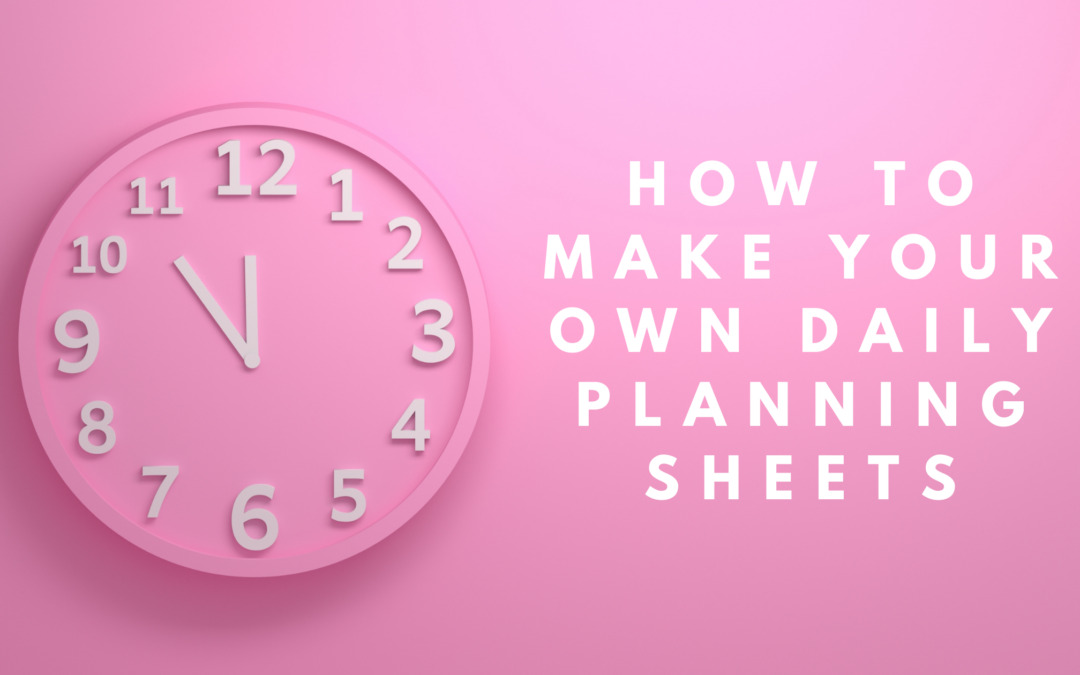Before we jump into the blog post, I want to quickly let you know that I’m currently accepting new one-on-one coaching clients who want a little extra guidance with changing their productivity habits. You can read more about my coaching practice here and book a session here. You can also download a FREE guide to habit formation and maintenance by subscribing to The Tending Letter in the pink box below this post. Thanks for your time, and enjoy the blog post!
I recently shared a post on Instagram about how I schedule my week using productivity tools. The post was a hit (59 people saved it; that’s a big deal in Instagramland). One of the four tools I mentioned was writing my paper to-do list.
When I ran out of my favorite planner pad, I decided to make my own customizable daily planning sheets. I’m on prototype three, and I’ve experienced some interesting and unexpected “ah-ha!” moments while tweaking the planning sheets to get the most out of them. In the rest of this post, I’ll walk you through the different parts of my own current version of the daily planning sheet, offer suggestions for how you can create your own, and then I’ll share a free printable sample you can use, too.
“Today’s Must-Do Tasks” and “Extra To-Do Tasks”
Separating the tasks I want to complete between a must-do list and a to-do list made me get really specific about what was truly a “must complete today” task versus an “I’d like to complete this today if I can” task. If I want to check off the extra to-do tasks, I can do so, but I always know that the must-do tasks take priority and I work backwards to make sure I can complete them before I run low on energy or before my work day ends.
I strongly encourage you to experiment with differentiating your general to-do list from an intentional–and shorter–must-do list. You can learn more about working with the must-do method in this blog post.
Schedule with Pre-filled Weekly Activities
My first draft of my daily planning sheet schedule went from 7am until 8pm. Since one of my goals is to stop working past 6pm, I made the decision to set boundaries in my planning sheet, which now serves as a reminder to say no to tasks after 6pm. I also recently experimented with making one sheet for each day of the week and typing weekly activities like yoga class, therapy, and co-working into the planner for that day.
If you know you want to start and end your day at certain times, build your daily planning sheet to fit that schedule. If you like to have slow mornings and don’t start checking off to-do tasks until 11am, experiment with starting your planner then! Experiment with cutting off your schedule at a set time so you cannot fill it in with tasks. Finally, if you’re printing your daily planning sheets and you want to take away some of the labor of rewriting tasks every day, try making a sheet for each day and filling it in with weekly tasks.
Four labeled daily habit tracker checkboxes
There are four key activities that I try to do most days of the week: yoga, writing morning pages, interacting on social media, and getting outside. I gave these four activities their own checkboxes and typed out the titles, which makes the stakes feel higher for completing them. Separating my daily goal activities out from my must-do or to-do lists was initially meant to save me from rewriting them every day, but I found that seeing them in typed font with bigger checkboxes helped me to hold myself more accountable to completing them.
If you have an activity that you know you want to practice every day or on most days, I encourage you to make those to-do tasks and checkboxes stand out on your daily planning sheets.
“Must-Send Emails for Today”
I like to tackle outstanding emails in one consecutive work session. Writing emails takes intellectual labor and energy, and it sometimes requires decision-making and research, so moving my must-send emails to their own space on my daily planner helps me to conceptualize email as its own important activity. Since it’s a “must-do” list instead of a “to-do” list, I give myself permission to write down “email so and so” on the planner sheet for the precise day I need to write or respond.
If emails take up a lot of your time and energy, you may want to dedicate an entire section to them like I did. If you feel that email fits fine in your general must-do or to-do lists, consider whether there’s a particular complex or aversive task that you’d like to give its own must-do list to.
Notes
My first version of my daily planning sheet didn’t include a notes section. When ideas or future to-do tasks floated into my mind, I found myself scrawling them at the side of the sheet. Adding in a simple notes section allows me to jot down ideas so I won’t forget them, and at the end of each day I review my notes to file them away where they need to go.
A free daily planning sheet for you!
Click the button below to access my most recent version of my daily planning sheet. I’ve edited it so you download it, print it out and fill it in, or just use it as inspiration to design your own daily planning sheets! Enjoy!
Don’t forget to subscribe to my twice a month newsletter below to get your FREE guide to habit formation and maintenance! You can read more about my coaching practice here and book a session here.

